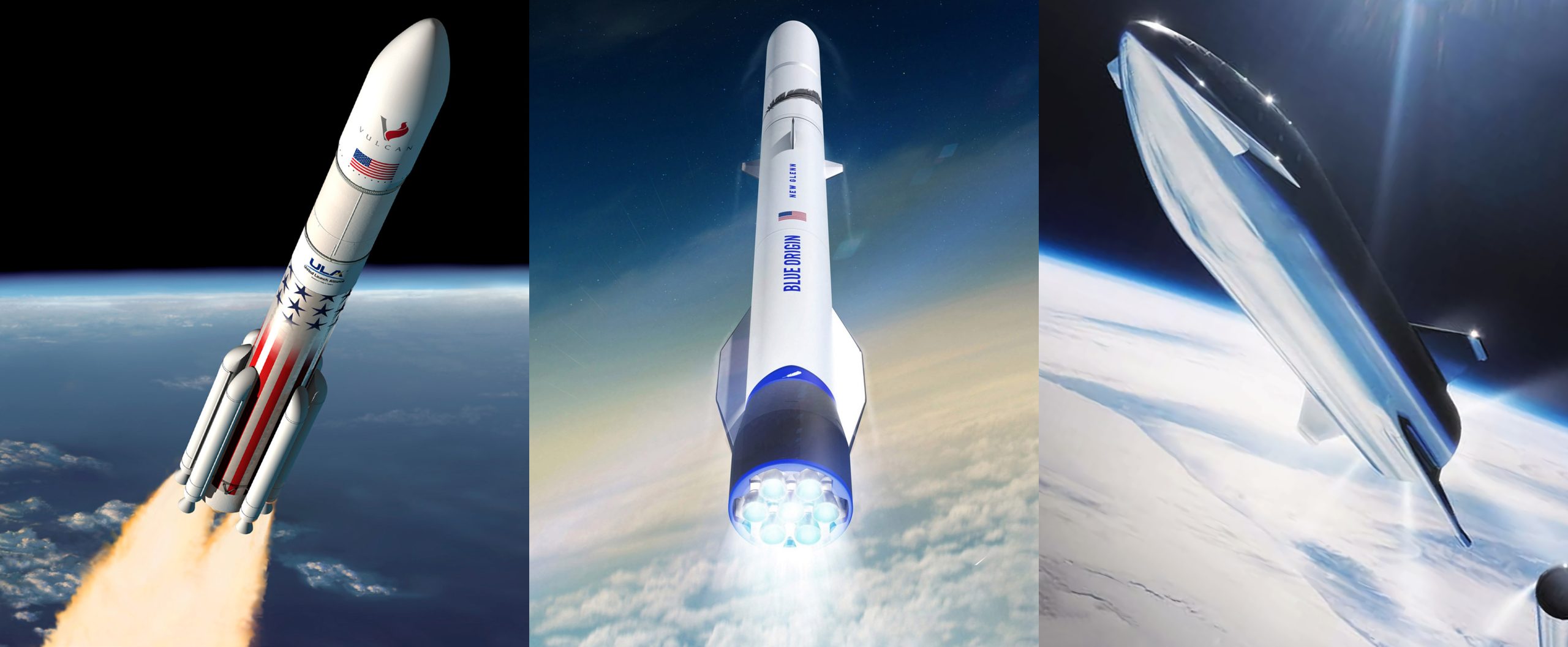
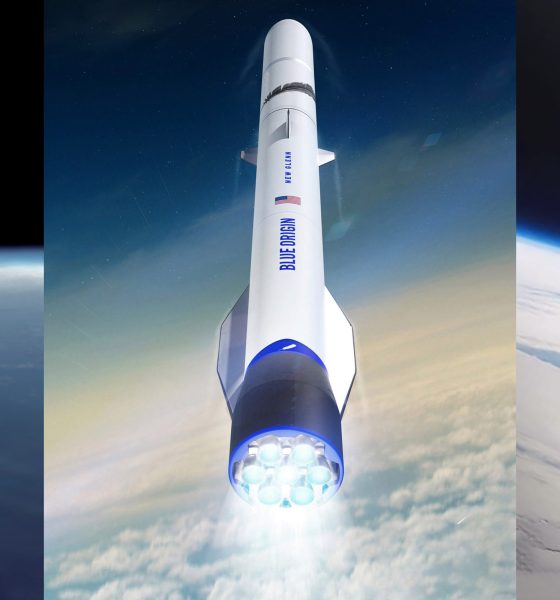
News
SpaceX COO offers harsh critique of Falcon 9, Starlink, and Starship’s competitors
SpaceX President Gwynne Shotwell says that the company’s Starlink internet constellation is years ahead of competition from OneWeb and Amazon. A step further, the executive also voiced several unprecedently harsh critiques of Jeff Bezos’ Blue Origin and Boeing and Lockheed Martin (ULA).
SpaceX President and Chief Operating Officer Gwynne Shotwell has been as busy as ever and has attended numerous major events over the last few weeks, often speaking with an unprecedented level of candor. The famous SpaceX executive repeatedly indicated that competitors have over-promised and under-delivered and, as a result, are years behind SpaceX’s own Starlink constellation. SpaceX has already launched 60 prototype satellites and has hundreds more on the way as part of a bid to kick off a busy period of “v1.0” satellite.
SpaceX intends to launch has many as 24 dedicated Starlink missions next year, equating to 60 satellites launched every two or so weeks. Meanwhile, the company is in the late stages of preparing to mass-produce “user terminals” and ground stations with the hope of delivering internet service to customers internet as early as mid-2020.
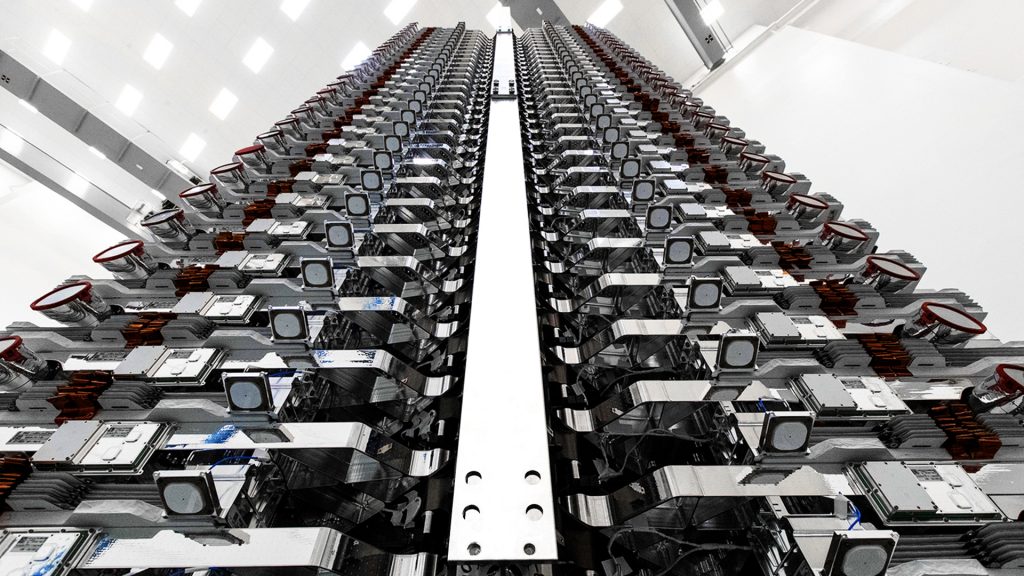
Starlink, OneWeb, and Project Kuiper
Shotwell was especially critical of megaconstellation competitors OneWeb and Amazon, the latter of which began hiring just a few months ago for a several-thousand-satellite constellation known as Project Kuiper. During an October 25th Q&A session with billionaire Ron Baron at the Baron Fund’s annual Investment Conference, Shotwell was uncharacteristically candid about the spaceflight industry outside of SpaceX’s doors, pointing to Jeff Bezos’s Blue Origin and the United Launch Alliance as prime examples of the many pitfalls of traditional aerospace methods.
Shotwell, on SpaceX's competitors and why other companies haven't built and landed orbital rockets: "Boeing and Lockheed like their cushy situation."— Michael Sheetz (@thesheetztweetz) October 25, 2019
She responded by crediting the hard work of SpaceX engineers and the often ambitious timelines set forth by company CEO Elon Musk, stating that, “I don’t think there’s a motivation or a drive there.” She explained that she believes that “engineers think better when they’re pushed hardest to do great things in a very short period of time, with very few resources. Not when you have twenty years.” This is a bit of a brutal take given that SpaceX is infamous for offering an often brutally hostile work environment and some of the worst salaries in the industry, but it’s nearly impossible to deny that SpaceX’s list of achievements is essentially unrivaled.
Baron: Why hasn't Bezos been doing this? He's spending lots of money.
Shotwell: They're two years older than us and they've yet to reach orbit. They get $1 billion of "free money" each year but I think engineers work better when they're pushed.— Michael Sheetz (@thesheetztweetz) October 25, 2019
Discussing Blue Origin, Shotwell pulled no punches, stating that “they’ve got a ton of money and they’re not doing a lot.” While both companies – SpaceX and Blue Origin – have remained private and exist in large part thanks to their wealthy owners, SpaceX has pursued commercial relevance and become wildly successful. On the other hand, Blue Origin – despite being two years older – would likely lose all forward momentum or fold outright if owner Jeff Bezos were to cease bankrolling the spaceflight company.
Blue Origin is currently developing a large, reusable, orbital-class rocket known as New Glenn and could eventually become SpaceX’s only serious competition, but the rocket’s first launch is unlikely to occur before H2 2021 or 2022.
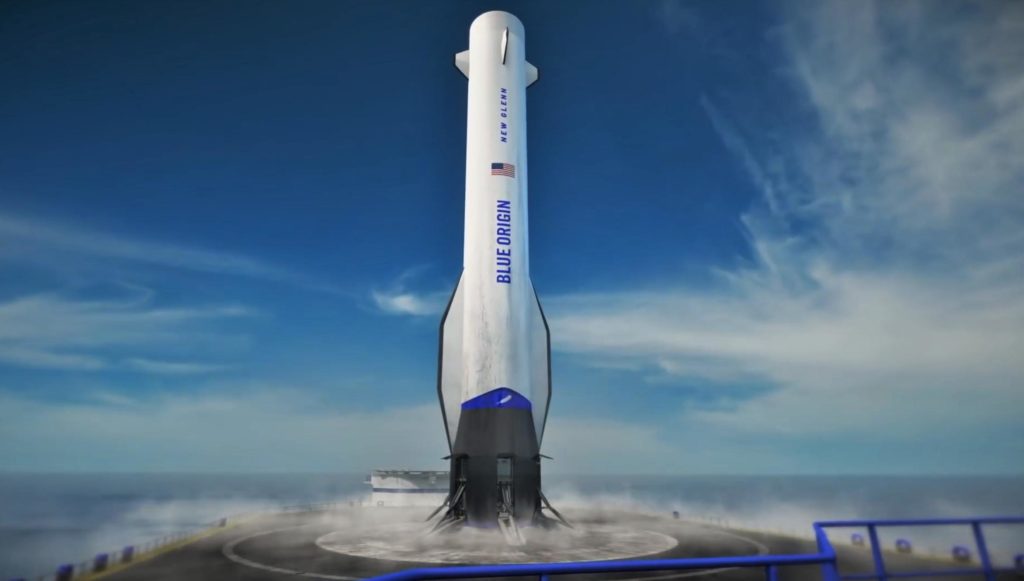
Simultaneously, Amazon recently revealed Project Kuiper, a slightly modified version of SpaceX’s Starlink constellation that is being lead by ex-Starlink executives fired by Elon Musk in June 2018. Project Kuiper, however, has only just begun and is likely at least 3-5 years away from beginning orbital testing, let alone providing any sort of service to customers.
Shotwell also addressed a new competitor in the large-scale satellite constellation market, OneWeb. During her talk with Baron, Shotwell bluntly warned potential investors to steer clear of the company. She boasted about SpaceX’s Starlink satellites, stating that they are “17 times better per bit”, a reference to Starlink’s greater per-satellite bandwidth, and cautioned that “if you’re thinking about investing in OneWeb, I would recommend strongly against it. They fooled some people who are going to be pretty disappointed in the near term.”
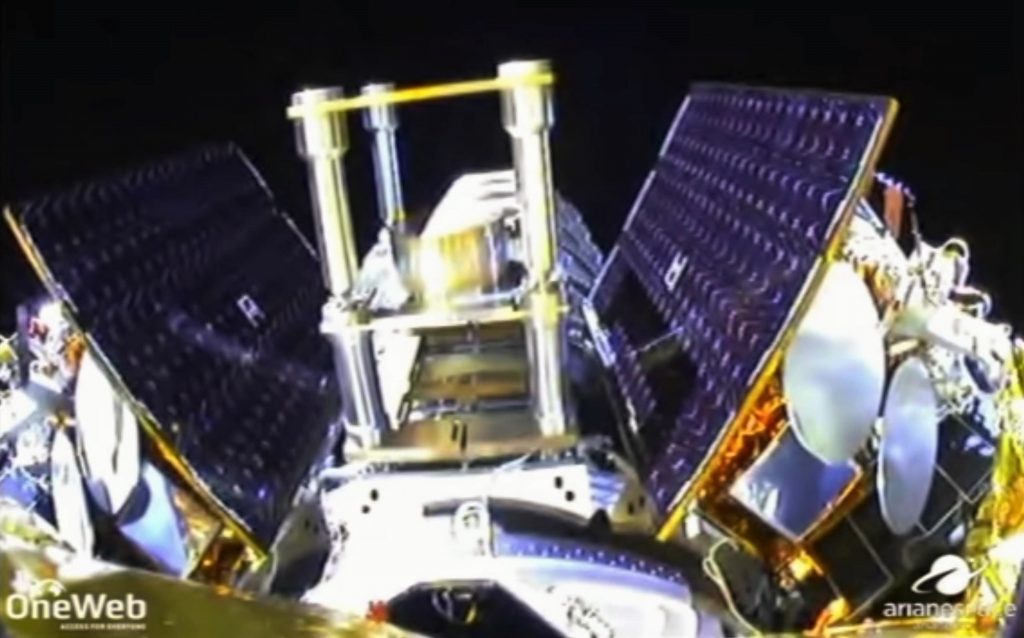
OneWeb later provided a follow up to CNBC reporter Michael Sheetz stating “we are not in the business of commenting on competitors. OneWeb’s satellites and constellation design are tested, market leading and we are excited to start our monthly launches soon and to start delivering much needed connectivity to people everywhere.” In reality, OneWeb and executives like Greg Wyler comment on competitors all the time, they just rarely put all their cards on the table.
Regardless, Shotwell’s streak of candor appears to have no end in sight. It remains to be seen whether her move towards uncharacteristically vitriolic public comments is a smart strategy, but she is undoubtedly making waves.
Check out Teslarati’s Marketplace! We offer Tesla accessories, including for the Tesla Cybertruck and Tesla Model 3.

News
Tesla aims to combat common Full Self-Driving problem with new patent
Tesla writes in the patent that its autonomous and semi-autonomous vehicles are heavily reliant on camera systems to navigate and interact with their environment.

Tesla is aiming to combat a common Full Self-Driving problem with a new patent.
One issue with Tesla’s vision-based approach is that sunlight glare can become a troublesome element of everyday travel. Full Self-Driving is certainly an amazing technology, but there are still things Tesla is aiming to figure out with its development.
Unfortunately, it is extremely difficult to get around this issue, and even humans need ways to combat it when they’re driving, as we commonly use sunglasses or sun visors to give us better visibility.
Cameras obviously do not have these ways to fight sunglare, but a new patent Tesla recently had published aims to fight this through a “glare shield.”
Tesla writes in the patent that its autonomous and semi-autonomous vehicles are heavily reliant on camera systems to navigate and interact with their environment.

The ability to see surroundings is crucial for accurate performance, and glare is one element of interference that has yet to be confronted.
Tesla described the patent, which will utilize “a textured surface composed of an array of micro-cones, or cone-shaped formations, which serve to scatter incident light in various directions, thereby reducing glare and improving camera vision.”

The patent was first spotted by Not a Tesla App.
The design of the micro-cones is the first element of the puzzle to fight the excess glare. The patent says they are “optimized in size, angle, and orientation to minimize Total Hemispherical Reflectance (THR) and reflection penalty, enhancing the camera’s ability to accurately interpret visual data.”
Additionally, there is an electromechanical system for dynamic orientation adjustment, which will allow the micro-cones to move based on the angle of external light sources.
This is not the only thing Tesla is mulling to resolve issues with sunlight glare, as it has also worked on two other ways to combat the problem. One thing the company has discussed is a direct photon count.
CEO Elon Musk said during the Q2 Earnings Call:
“We use an approach which is direct photon count. When you see a processed image, so the image that goes from the sort of photon counter — the silicon photon counter — that then goes through a digital signal processor or image signal processor, that’s normally what happens. And then the image that you see looks all washed out, because if you point the camera at the sun, the post-processing of the photon counting washes things out.”
Future Hardware iterations, like Hardware 5 and Hardware 6, could also integrate better solutions for the sunglare issue, such as neutral density filters or heated lenses, aiming to solve glare more effectively.
Elon Musk
Delaware Supreme Court reinstates Elon Musk’s 2018 Tesla CEO pay package
The unanimous decision criticized the prior total rescission as “improper and inequitable,” arguing that it left Musk uncompensated for six years of transformative leadership at Tesla.

The Delaware Supreme Court has overturned a lower court ruling, reinstating Elon Musk’s 2018 compensation package originally valued at $56 billion but now worth approximately $139 billion due to Tesla’s soaring stock price.
The unanimous decision criticized the prior total rescission as “improper and inequitable,” arguing that it left Musk uncompensated for six years of transformative leadership at Tesla. Musk quickly celebrated the outcome on X, stating that he felt “vindicated.” He also shared his gratitude to TSLA shareholders.
Delaware Supreme Court makes a decision
In a 49-page ruling Friday, the Delaware Supreme Court reversed Chancellor Kathaleen McCormick’s 2024 decision that voided the 2018 package over alleged board conflicts and inadequate shareholder disclosures. The high court acknowledged varying views on liability but agreed rescission was excessive, stating it “leaves Musk uncompensated for his time and efforts over a period of six years.”
The 2018 plan granted Musk options on about 304 million shares upon hitting aggressive milestones, all of which were achieved ahead of time. Shareholders overwhelmingly approved it initially in 2018 and ratified it once again in 2024 after the Delaware lower court struck it down. The case against Musk’s 2018 pay package was filed by plaintiff Richard Tornetta, who held just nine shares when the compensation plan was approved.
A hard-fought victory
As noted in a Reuters report, Tesla’s win avoids a potential $26 billion earnings hit from replacing the award at current prices. Tesla, now Texas-incorporated, had hedged with interim plans, including a November 2025 shareholder-approved package potentially worth $878 billion tied to Robotaxi and Optimus goals and other extremely aggressive operational milestones.
The saga surrounding Elon Musk’s 2018 pay package ultimately damaged Delaware’s corporate appeal, prompting a number of high-profile firms, such as Dropbox, Roblox, Trade Desk, and Coinbase, to follow Tesla’s exodus out of the state. What added more fuel to the issue was the fact that Tornetta’s legal team, following the lower court’s 2024 decision, demanded a fee request of more than $5.1 billion worth of TSLA stock, which was equal to an hourly rate of over $200,000.
Delaware Supreme Court Elon Musk 2018 Pay Package by Simon Alvarez
News
Tesla Cybercab tests are going on overdrive with production-ready units
Tesla is ramping its real-world tests of the Cybercab, with multiple sightings of the vehicle being reported across social media this week.

Tesla is ramping its real-world tests of the Cybercab, with multiple sightings of the autonomous two-seater being reported across social media this week. Based on videos of the vehicle that have been shared online, it appears that Cybercab tests are underway across multiple states.
Recent Cybercab sightings
Reports of Cybercab tests have ramped this week, with a vehicle that looked like a production-ready prototype being spotted at Apple’s Visitor Center in California. The vehicle in this sighting was interesting as it was equipped with a steering wheel. The vehicle also featured some changes to the design of its brake lights.
The Cybercab was also filmed testing at the Fremont factory’s test track, which also seemed to involve a vehicle that looked production-ready. This also seemed to be the case for a Cybercab that was spotted in Austin, Texas, which happened to be undergoing real-world tests. Overall, these sightings suggest that Cybercab testing is fully underway, and the vehicle is really moving towards production.
Production design all but finalized?
Recently, a near-production-ready Cybercab was showcased at Tesla’s Santana Row showroom in San Jose. The vehicle was equipped with frameless windows, dual windshield wipers, powered butterfly door struts, an extended front splitter, an updated lightbar, new wheel covers, and a license plate bracket. Interior updates include redesigned dash/door panels, refined seats with center cupholders, updated carpet, and what appeared to be improved legroom.
There seems to be a pretty good chance that the Cybercab’s design has been all but finalized, at least considering Elon Musk’s comments at the 2025 Annual Shareholder Meeting. During the event, Musk confirmed that the vehicle will enter production around April 2026, and its production targets will be quite ambitious.








